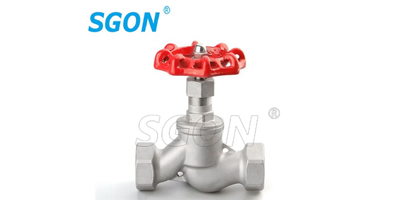After the installation of a globe valve, it is crucial to conduct a series of checks to ensure its proper functioning and the integrity of the piping system. These checks not only help in identifying any potential issues early on but also contribute to the long-term reliability and safety of the operation.
1. Valve Body and Connections
Begin by visually inspecting the valve body for any signs of damage that might have occurred during installation. Look for scratches, dents, or cracks on the surface of the valve. Even minor damage can potentially affect the valve's performance and durability over time. Check the flange connections or threaded connections, depending on the type of installation. Ensure that the bolts are tightened evenly and to the appropriate torque. For flange connections, the gasket should be properly seated and not showing any signs of displacement or damage. A misaligned or loose connection can lead to leaks, which can cause significant problems in the system.
2. Valve Operation
Verify that the valve operates smoothly. Turn the valve handle or actuator in both the opening and closing directions. It should move freely without any excessive resistance or binding. If the valve is difficult to operate, it could indicate issues such as misalignment of internal components, improper lubrication, or debris trapped inside the valve. Additionally, check the valve's travel. Ensure that it opens and closes fully as per the design specifications. A valve that does not open or close completely can disrupt the flow control in the system and may lead to inefficiencies or even system failures in some cases.
3. Sealing Integrity
One of the most critical aspects to check is the sealing integrity of the valve. With the valve in the closed position, apply a test pressure to the upstream side of the valve. This can be done using a pressure gauge and a suitable pressure source. Observe the valve for any signs of leakage. Check around the valve stem, the body-to-body joint (if applicable), and the connection points. Even a small leak can lead to wastage of the fluid being transported and can also cause damage to the surrounding equipment or environment in the long run. If a leak is detected, it may be necessary to further investigate the cause, which could range from a faulty gasket to improper installation or a damaged valve seat.
4. Flow Direction and Flow Characteristics
Confirm that the valve is installed in the correct flow direction. Globe valves are designed to work optimally in a specific flow direction, and incorrect installation can lead to increased pressure drop and reduced flow control efficiency. Additionally, check the flow characteristics of the valve. This can be done by observing the flow rate and pressure drop across the valve at different opening positions. Compare the actual flow and pressure characteristics with the expected values based on the valve's specifications. Deviations from the expected performance could indicate problems such as clogging of the valve internals, incorrect sizing of the valve for the application, or issues with the upstream and downstream piping configuration.
5. Actuator (if applicable)
If the globe valve is equipped with an actuator, perform a comprehensive check of the actuator's functionality. Ensure that the actuator is properly calibrated and that it responds accurately to the control signals. Test the actuator's ability to open and close the valve within the specified time limits. Check for any signs of abnormal noise or vibration during actuator operation, as these could indicate mechanical problems within the actuator or misalignment with the valve. Also, verify that the power supply (if electrical) or the pneumatic/hydraulic pressure (if applicable) is within the required range and stable.
In conclusion, a thorough post-installation check of a globe valve is essential to guarantee its proper operation and the overall performance of the piping system. By carefully examining the valve body, connections, operation, sealing integrity, flow characteristics, and actuator (if present), potential problems can be identified and addressed promptly, minimizing the risk of costly downtime and ensuring the smooth running of the industrial process or application. Regular maintenance and periodic checks in the future will further enhance the valve's reliability and lifespan.

GET A QUOTE